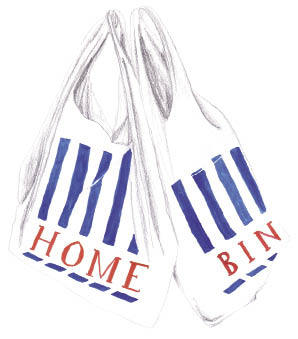Q IS FOR QUANTITY
The problem with food and health can now be summed up in one phrase: ‘too much’. More than six out of 10 men and five out of 10 women in the UK are overweight or obese. Talk to medics such as cancer experts and they say it’s especially important not to put on weight around your middle — the dreaded middle-age spread.
How to lose it? ‘Eat less’ is obvious — but too simple. Increasingly, obesity experts think the environmental aspect of overeating also needs to be addressed.
In the 1990s, the phrase ‘obesogenic society’ — in which we in the West live — was coined. Everywhere you go there are encouragements to over-eat, from the sugar in breakfast cereals to ballooning portion sizes to the fat that is loaded into restaurant food to make it tasty. Then there’s the ever-increasing range of choice. Studies show that the greater the choice, the more you eat. All in all, unless you actively try to not eat too much, you are likely to do so.
Part of cutting back is simply to be more conscious about how easy it is to over-eat. One diet tip is simply to eat off smaller plates. We eat, apparently, according to the visual cue of portion size rather than satiety. Our bodies are good at recognising that we’re hungry but not so good at realising when we’re full.
There’s also the question of not eating too much meat, in a world of scarce resources (it takes at least 7lb of grain to produce 1lb of intensively reared beef). Rachel de Thample’s timely tome, Less Meat More Veg, puts this into the context of how much protein we actually need (two pieces each the size of a pack of cards per day, she says) and gives good recipes to show how to eat less and better.
twitter.com/dethample
R IS FOR RUBBISH
When it comes to the environment, rubbish is rubbish. The government’s target is to halve what we send to landfill by 2013. How to do this?
Tristram Stuart, in his book Waste: Uncovering the Global Food Scandal, shows that up to 50 per cent of food is wasted, not least because a quarter of household food is thrown away. Composting and other forms of recycling are good, he says, but better to reduce the amount we use and waste in the first place.
One way to reduce our rubbish is to shop less often and use up what’s in the fridge rather than over-stocking. This saves a surprising amount of money. According to WRAP (Waste and Resources Action Programme), the average household throws away £680 worth of food a year. Its Love Food Hate Waste campaign website has a handy portion-size calculator for cooks, recipes for using up leftover and other ideas.
Even vegetable peelings don’t need to be thrown. Cooks can use them to make stock — and even soup — or simply leave veg unpeeled, eating skin-on fries or roasting carrots as they are. Nutrients and taste are in the skin. Just give them a good scrub.
One way we are encouraged to waste food is the notorious ‘sell by’ and ‘best before’ dates. These have nothing to do with food safety, and originate with the need of shops to keep their stock circulation going. So long as food is kept in the fridge and looks and smells OK, treat these dates as guidelines rather than rules. Lord Haskins, former head of Northern Foods, is even quoted in Stuart’s book as saying he’d eat meat five or six days after its ‘best before’ date, and dairy for a month, so long as he judged it to be OK.
tristramstuart.co.uk | lovefoodhatewaste.com






Comments